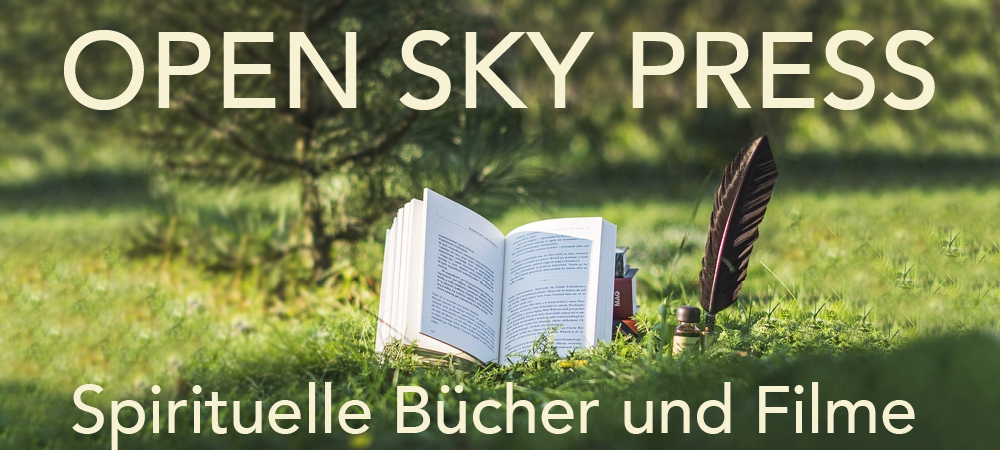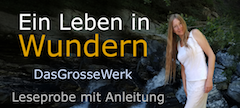|

Keine Daten gefunden
Kooperations-Partner
Anzeige

Anzeige

Anzeige

Anzeige

Anzeige

TextDhrupad for Western Singers
Interview mit Amelia Cuni von Birgit Kratz
Amelia Cuni ist eine in Indien hoch angesehene Interpretin des Dhrupad-Geangsstils. In diesem Interview erfahren wir von ihr, was Dhrupad ist und was Amelia, gebürtige Italienerin, veranlasst hat, diese traditionell überlieferte Form des Gesangs in Indien über viele Jahre hinweg zu studieren. Und wir gehen der Frage nach, ob die überlieferten Techniken des Dhrupad-Gesangs auch für Sänger unserer Breiten von Interesse sein könnten und warum.
Da das Interview in englischer Sprache geführt wurde, gleich hier noch ein Hinweis: Vom 3. - 10. Oktober gab es in Berlin einen Workshop "Dhrupad Gesang und Feldenkrais" mit Amelia Cuni und der Feldenkrais-Lehrerin Ute Birk. Ein Erfahrungs-Bericht über dieses Seminar ist unter dem Punkt Seminar-Tests in unserem Spirituellen Portal zu finden (und einen Link dorthin gibt es am Ende des Interviews im P.S.). Birgit: Amelia, you lived for many years in India and you studied Dhrupad singing under the guidance of very wellknown masters belonging to old traditions.
So first I would like to know: What is Dhrupad?
According to Indian music lore, ragas (melodic modules, modes) are considered entities existing in their own musical dimension, kept alive and in good health by the sincere and disciplined efforts of practicing musicians. Over the centuries, the raga praxis has changed considerably, transforming with it, in an organic way, the character of Indian music. As a result, modern Indian ragas and talas are based on highly refined musical concepts that have been cultivated over centuries. In the classical tradition of North India, improvisation is a vital ingredient. More precisely, it is considered to be the only way to bring ragas to life. This is because the music, belonging to an oral tradition, depends upon each performer to re-construct the ‘personality’ of the raga each time anew, relying only on memory and inspiration. The songs are accompanied by the ancient double headed drum pakhawaj which greatly enriches the texture of the rendition with its deep resonating sound and the skillful punctuation of the improvised singing patterns. Dhrupad is an inspirational, devotional genre and at the same time passionate and earthy like most of Indian sacred art. It is highly melodious and its meditative moments are balanced by structures of great rhythmic vitality. By focusing on the poetic verses, the mind enters a kind of meditative exploration of sound and content. Often the text is a so-called dhyana, or visualization of various divine attributes that the singer evokes, looking for a mystical experience. The refinement of the vocal techniques and the canons of musical elaboration and improvisation make up a powerful architecture that supports the ideal of ‚the temple of Existence’ : Pt. Dilip Chandra Vedi has effectively explained this concept in one of his dhrupad compositions: Nadabrahma (Sound as manifestation of the Creator) is all-pervasive with knowledge, The entire Universe is made up of Nada (sound), which is its measure. From Nada comes the letters, the alphabet, the word and the sentence, From language, knowledge increases. In the City of Nada, Sangeet (music and dance) is the temple, Shruti-s (microtones) are the walls and Svara-s (tones) are the doors. The consonance of the notes makes up the Raga which is the image of God in the temple. Thus explains Vedi Nadarang! The performance in dhrupad is organized according to a well proportioned structure which confers depth and grandeur to the raga, this form has been refined with the contribution of generations of musicians. Besides being precious evidence of a time of great artistic achievements, for many musicians dhrupad is also an instrument of spiritual practice. In this respect singing is considered to be the most direct and effective method of prayer and contemplation. What is important is to look for the relationship with the divine and to receive benefits from the harmonizing effect of the music. The audience will share this sacred act by means of respectful and careful listening. It is also interesting to note that music is considered as a universal language in which subject and object combine and merge towards a mystical experience that has the ability to dissolve differences arising from social and religious discrimination. In a time of fanatism this represents a valid message of tolerance which I have experienced in person as a woman, foreigner, and therefore ‚outsider’. Certainly, besides the spiritual dimension, a dhrupad performance demands a high qualitative level of music making. In this way the listener is attracted to it and becomes absorbed with the artist in a spiral of intoxicating sound and rhythm. From the musician, modesty and sensitivity is required, and an appropriate use of skills patiently developed as a kind of spiritual practice (sadhana). They should be aimed at the effective expression of the bhava (emotion, sentiment) and not to a sterile show of virtuosity. Dhrupad survives with the contributions of dedicated musicians, researchers and music-lovers from all over the world. Birgit: What attracted you to learn this traditional style of singing? Amelia: I have been attracted to music since childhood and started learning various instruments but never could get deeply involved with any of them. My initial enthusiasm and keenness to learn could never last for long. As I later understood, the classical European repertoire and teaching methods, relying so much on written, composed music, was not for me. There appeared to be an unsolvable conflict between the subtle and poetic musical matter and the highly specialized instrumental techniques and pedagogic tools. A new world of possibilities opened up during my teens the moment I came in contact with Indian classical music, first of all through the recordings of Ali Akbar Khan and Ravi Shankar. The sound and performance of this ancient tradition deeply moved and inspired me. The sustained drones and the gradual unfolding of the ragas induced a new and fascinating kind of experience involving strong emotions as well as a contemplative and blissful state I had not known before. This kind of music was able to fill the gap I was experiencing in my humanistic education, where little attention seemed to be given to such matters. I therefore resolved to apply myself thoroughly to the study of Hindustani music and found a sitar teacher in Italy, Sageer Khan, from whom I started learning the basics of raga and tala. Beside the fascination with its sound and the effect it has on a receptive listener, what I mostly valued in raga music then (and I still do now, after more than 30 years of involvement ) is the philosophical framework supporting the tradition and granting it its generative power and flexibility. One can appreciate the influence and practical applications of abstract concepts such as nadabrahman (sound as agent of creation) and rasa (aesthetic experience). According to this view, which implies mythical and symbolic thinking, music-making is understood as a creative process having an impact on the whole universe, a micro-macrocosmic relationship which helps to get closer to the basic question of existence. Likewise, the inner attitude of the performer is considered to be as important as his musical skills and the process more critical than its final product. The fact that a raga must be re-created anew each time is part of a vision in which music is not separated from life but flows and resounds with it, imitating Nature in her manners of operation. Therefore, it seemed to me I had found an artistic discipline which could also become a way of life and satisfy my existential quest as well. I could not possibly miss it, even if it might have seemed a very eccentric choice to many people, even if I would have to merge into such a different and far away culture. Birgit: After living in India and studying there for 9 years the art of Dhrupad singing under the guidance of masters like Fahimuddin Dagar, D.C. Vedi, Bidur Mallik and Manjushri Chatterjee you returned to europe. Until now you are continuing your investigations into Dhrupad singing and you found your own way to teach your knowledge. What can european singers gain from the Dhrupad singing technics you offer? Amelia: The dhrupad voice training provides a set of basic vocal techniques, exercises, aesthetic insights from a tradition which has a lot to offer to the present research and experimentation in our Western music world. I have developed my teaching skills to suite the needs of my European students who approach the subject of dhrupad with specific motivations and aims and in a non-Indian context. My interest in music education and in sharing cross-cultural experiences have shaped my teaching method which can be summarized as follows: How to train the voice, aiming at an unhindered delivery which has the speaking-tone as its base. By means of specific exercises the students will learn to develop their voices naturally, according to their individual capacities, avoiding straining and becoming aware of possible habits and blocks which may be an obstacle to the voice production. We also learn to open the lower resonance in the abdomen and become aware of the interplay between imagination and voice. Especially conceived exercises will also add precision, flexibility and mellifluence to the singing, qualities which will be worked on in depth in the advanced training. How to train musical creativity, experiencing the shades of drone-related intervals and the general aesthetic principles and traditional structures of modality (raga-tala) in Indian music. By practicing with the drone (tanpura) the perception of tuning will be gradually refined, while the raga-tala melodic and rhythmic modules allow vast scope for musical creativity. The meaning of improvisation within the frame of traditional music will therefore become clear. The body as an instrument. Set of movements and exercises which cultivate a healthy and efficent use of the body-mind relationship while singing. In some of my seminars, this important link is researched and practised using the Feldenkrais Method: Moshe Feldenkrais has developed a learning method that uses attentive observation for the own body and how we move. The exploration of certain movement functions guided by the Feldenkrais teacher creates higher awareness for the use of the self in singing or playing an instrument. It leads to better coordination in the body, more functional, effective and elegant movements. The Feldenkrais Method may interest and benefit any kind of singer since it focuses on some very basic aspects of voice production and music making which can be applied to different musical contexts. It is a guide to experience singing from a different point of view, possibly more internal and subtler by means of a very intensive practice of listening and a direct experience of the pure intervals. At the same time it contains very practical and effective techniques to develop one´s own musical abilities. Birgit: Thank you, Amelia, for this very inspiring interview. P.S. Ein Erfahrungsbericht über den Workshop "Dhrupad-Gesang und Feldenkrais", der am ersten Wochenende im Oktober stattfand, in deutscher Sprache ist >>hier zu finden. Text verlinken
|





